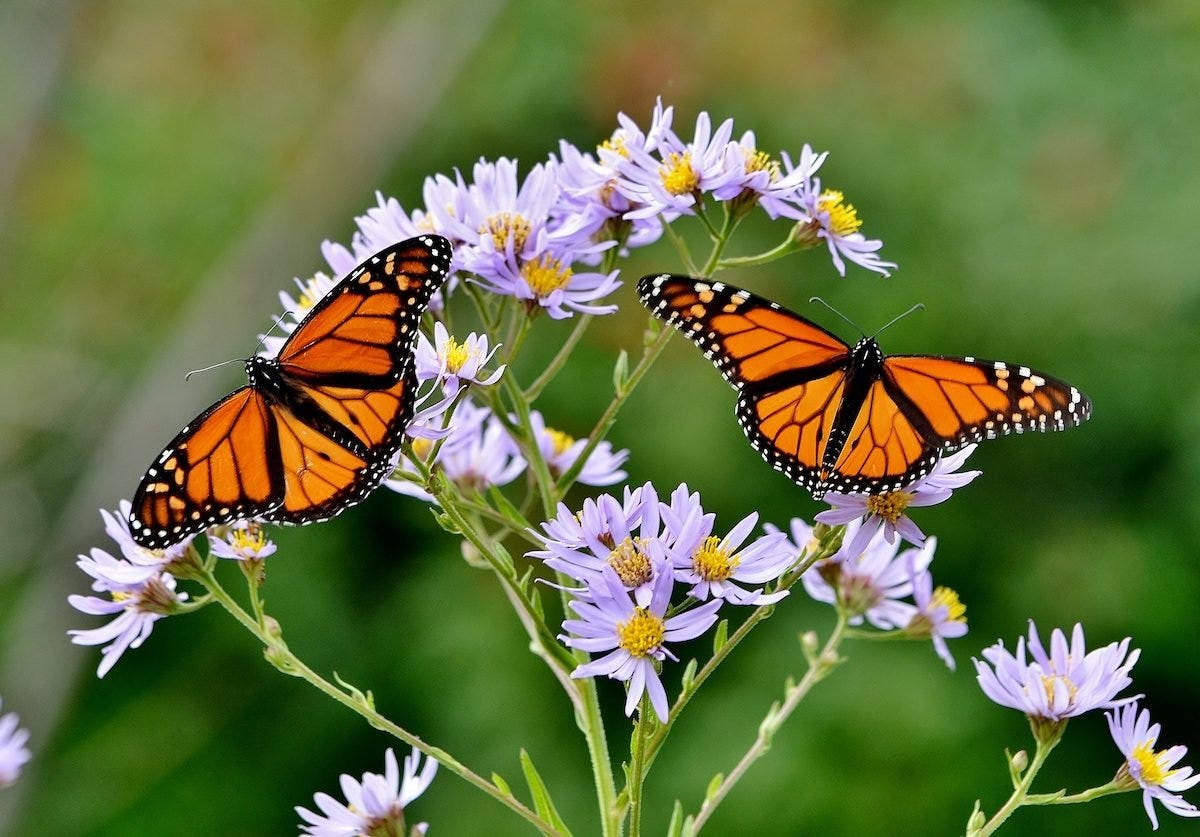Why Pollinators Will Save the Planet: Bugs that will lead the way
It was just a serendipitous meeting. I was working with our team of environmental stewards to vanquish some invasive plant species that were crowding out native vegetation in our hedgerow area.
“I just saw a rusty-patched bumblebee,” announced Joe Gannon, a volunteer from outside our ‘hood whom I didn’t know. My ears perked up like a bunny sensing an abundant carrot patch.
“That’s a federally endangered species,” I quickly retorted, picking from my brain the only petal of information I knew about these bees. “You saw one?”
“Yes and I took pictures,” Joe replied. Searching my ever-sieve-like memory, I remembered Joe from a Forest Preserve plant sale. He was the guy holding a placard informing people about pollinators. A web designer by trade nearing retirement, pollinators are his new passion. I later interviewed him for a Next Avenue piece. (Note: Trump’s cruel cuts to PBS eliminated funding for this wonderful resource).
As a certified volunteer master naturalist, I live for opportunities to educate myself and others about the joy of interconnected life on this planet. So let’s talk about bugs, more specifically bugs that work every hour of the day to make life on this planet livable.
The first thing I learned as a naturalist is how little I know about how nature really works. So I seek the knowledge of academics and folks who work in the field.
One such font of knowledge on pollinators is Dan Sandacz. He’s an ecologist with our Lake County Forest Preserves. Two of my dear neighbors – Karin Wisiol and Sunny Sonnenschein – invited him to do a presentation on pollinators in our community in June. He brought with him a few cases from his bug collection plus a wealth of knowledge from his research in our local forest preserve.
“Some 80% of plants we eat are pollinated by bugs,” Sandacz opens his presentation. “They (pollinators) are under threat of extinction from habitat loss, climate change and chemicals.”
Having documented which plants are most frequented by pollinators in nine local Forest Preserves, Sandacz offered a lineup of the most-popular flowering plants favored by hard-working bugs like bumblebees.
“Bee balm” (Menarda) topped the list. With its delicate blue petals, bee balm is a veritable summer drive-in for pollinators, offering the bug equivalents of corn dogs and root-beer floats. Prairie coreopsis, wild quinine and rudbekia (black-eyed susans) round out his favorite flower list. Bee balm, which grows in abundance in the Midwest, though, seems to be the Taylor Swift of pollinator influencers.
Like most modern ecologists, Sandacz preaches the value of biodiversity. The more the merrier in terms of native flowering plants. “Every plant has value. That should be the goal for every natural landscape.”
I’m always surprised at how biodiversity makes such a broad impact on ecosystems. The more bugs you have pollinating, the more plants that can be supported. That’s why healthy prairies and backyards can be a buffet of flowering plant life. It’s a symbiotic relationship we can promote through natural landscaping.
Late last year, I also enjoyed a buffet of biodiverse bug knowledge after seeing a presentation by Angella Moorhouse, author of “Flower Bugs: A Guide to Flower-Associated True Bugs of the Midwest” (Pollination Press LLC). She enlightened me and my fellow master naturalists at a state conference in Macomb, Illinois, the home of Western Illinois University.
There are hundreds of true bugs (heteroptera) that visit flowers. Although bees and butterflies get most of the attention — the more colors you have the more charisma —other bugs are working away. Insects from cicadas to stink bugs are involved in this essential, life-sustaining activity. And what variety, which range from innocent-sounding damsels to sinister assassin bugs!
“There are only a few true bugs that likely provide enough pollen exchange for the benefit of plant reproduction,” Ms. Moorehouse observes, having studied this subject for years as an ecologist and photographer. “Those most closely associated with flowers include some species of minute pirate bugs (Anthocoridae), scentless plant bugs (Rhopalidae), burrower bugs (Cynidae), stink bugs (Pentotomidae) and ebony bugs (Thyreocoridate).”
Which brings me to some useful advice on dealing with stink bugs that migrate into your home when the weather gets colder: Don’t squish them! Their odorous blood will smell up your fingers. Gently relocate them outside.
Still, even for those who abhor bugs, bees and other pollinators, the takeaway is the same. We need bugs to pollinate our flowering plants and vegetables from corn to coneflowers. Drenching our lawns and gardens with pesticides is perilous and unnecessary. In a larger global ecological sense, living with less environmental chemicals is not only good for our pollinator friends, it’s good for us.
'
Vincit Omnia Veritas
(Truth Conquers All)
Thanks for reading and please share! If you enjoy my humble thoughts, please upgrade to a paid subscription. To contact me about speaking and writing or offer even more dangerous ideas, email me: johnwasik@gmail.com.
This essay was not produced by AI. I am a sentient writer, journalist, author, environmentalist, speaker, musician and elected county forest preserve commissioner who’s written 19 books and contributed to The New York Times, Next Avenue, Bloomberg and Reuters.
As a bonus, subscribers receive free access to my new book “The Natural Neighborhood,” which is serialized in this newsletter: A new chapter every month.

